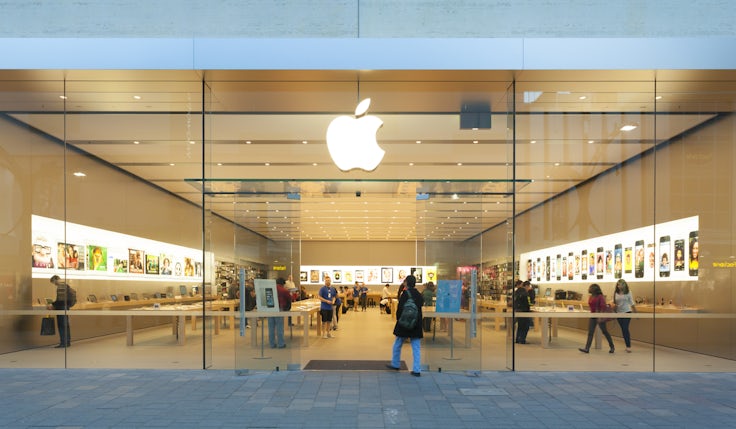Next 25 years for commercial radio
Commercial radio celebrates its 25th birthday tomorrow (Thursday), marking the date when the London Broadcasting Company made its first radio broadcast – at six in the morning on October 8 1973. However, some believe the commercial radio business is actually much younger than this.
GWR chief executive Ralph Bernard contends: “Commercial radio in this country is only about four or five years old. It was then that the big players came into the industry and began to invest in it. It was then that the industry began to move from two per cent of all advertising revenue to five per cent. It was then that we really began to take on the BBC.”
The commercial side of the medium has come a long way since the struggle of the Seventies, the steady growth in the Eighties and the boom of the Nineties. There are currently over 220 commercial stations in the UK, which reach 51 per cent of the public. In the past year they generated 390m in advertising revenue.
That one of the country’s hottest celebrities, Chris Evans, spends his mornings as a commercial radio DJ, shows how far the medium has come.
Senior industry figures agree that the past, particularly the recent past, has been good for them. What provokes more debate is what will happen to radio in the future.
The industry is divided about how radio will evolve. LBC managing director Nigel Reeve says: “Radio will become similar to magazines. It will appeal to niche audiences. There will be sports or financial stations. In a city, a station like this will be able to get by with a weekly audience of 50,000.”
Reeve believes that another 100 stations could be launched over the next five years, but others are more sceptical about that scale of growth.
Sally Oldham, Capital Radio managing director, says: “I’m not in favour of having a raft of small stations – I’m not sure if they have added anything to the industry. The London women’s station Viva is just one example of a niche that didn’t work. Small scale licences are really the remit of public service broadcasters.”
Oldham adds: “The best way to use the rest of the remaining spectrum is to provide as many regional and city-wide stations as possible. These stations have critical mass, which is what advertisers want, and they are the quickest way to build the industry.”
She estimates that, in the medium term, there is only space for about 30 more stations.
Zenith head of radio Yvonne Scullion agrees that size is what matters. She comments: “You need the critical mass that regional stations have. That makes it far easier to buy a campaign and gives you the volume you need.”
The other issue that confronts the industry at the moment is digital radio. Only one consortium, Digital One, has bid for the national licence. The group is made up of media company NTL, Talk Radio, and GWR, which owns Classic FM, the country’s largest commercial radio station.
GWR’s Bernard says: “Digital is happening in TV, music recording, and all types of media. It is not likely that radio will be the only medium to stay marooned in an analogue world.”
Digital radio provides clearer sound, plus the ability to provide limited text and pictures on a liquid crystal display screen attached to the receiver.
Capital Radio has talked to the Digital One consortium, but decided that revenues would rely on FM licences for some time to come. Oldham says: “The 3m investment they asked for required an act of faith that is slightly beyond us at the moment.”
However, a managing director of another major radio station is more blunt. He says: “Digital TV has sports and movies that will drive the product. But what is the consumer benefit of digital radio? People aren’t thinking about that. We are asking people to pay 400 for clearer sound, and that is obviously too much.”
Many in the industry think that there will be no real returns on digital radio for at least a decade. However, BMP Optimum head of radio Jonathan Gillespie reckons that even that date is “hopeful”.
Regulation is another point that vexes radio groups. Bernard comments: “The groups that started off in radio are now having to go into non-core businesses or buy overseas.”
In the past few years, GWR has bought stakes in stations in countries such as Poland, Finland and South Africa. Capital has a stake in record company Telestar and owns restaurant chain My Kinda Town.
Virgin Radio managing director John Pearson says that a single regulatory body would put the BBC and commercial radio on a level playing field. He says: “In the Nineties, Radio 1 and Radio 2 have repositioned. And if Radio 3 wanted to turn a hip-hop station it could, because the corporation regulates itself to a large degree. I can’t do that with my station because I am bound by promises of performance.”
Tony Stoller, chief executive of the Radio Authority says: “We have to strike a balance between getting as wide a range of stations on air and building the industry through its strongest groups. But I would say the mood here and in government is to look again at existing regulation regarding ownership.”
It has taken 25 years for the industry to reach adolescence. The question is how the industry will fare during its mature years.
Torin Douglas, page 21



